bringing awareness to bisexual history and archiving it 🩷💜💙 a few things posted could have nsfw themes so proceed with caution.
Don't wanna be here? Send us removal request.
Text

Boston Bisexual Women’s Network (Winter, 2010)
#bi history#bi pride#bisexuality#lgbtq history#queer history#bisexual pride#bisexual history#bi#bisexual
21 notes
·
View notes
Text
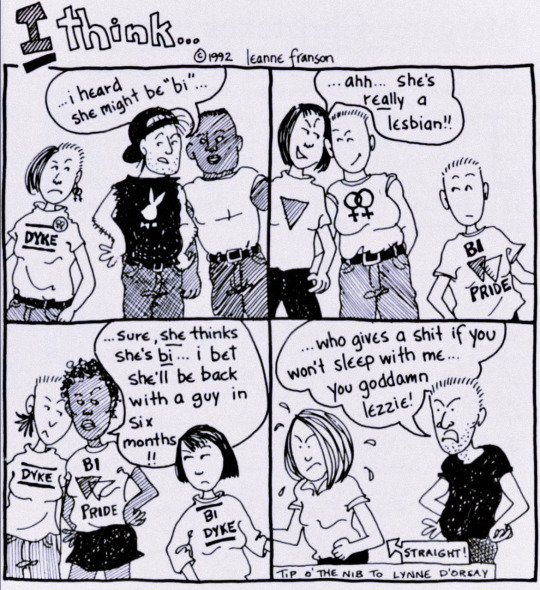
“I Think…” by Leanne Franson, 1992
750 notes
·
View notes
Text

National Biways (Nov/Dec, 1996), BiNet News (Fall, 1996)
#bi history#bi pride#bisexuality#90s#lgbtq history#queer history#biphobia#bisexual history#bisexual#bisexual pride
51 notes
·
View notes
Text

National Biways (May/June, 1997)
#bi history#bi pride#bisexuality#90s#lgbtq history#queer history#bisexual history#bisexual#bisexual pride
20 notes
·
View notes
Photo



Susan Carlton’s “This poem can be put off no longer,” from the anthology Bi Any Other Name: Bisexual People Speak Out (1991).
112 notes
·
View notes
Text
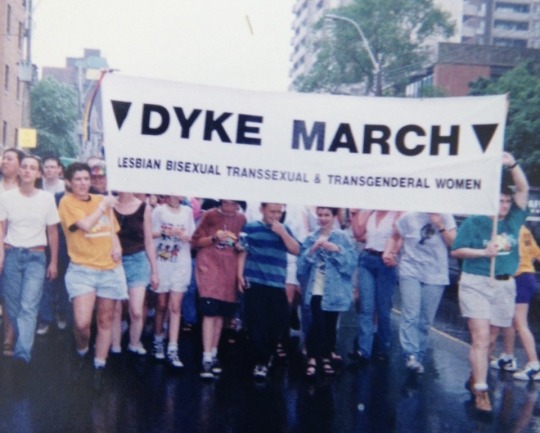
Group marching in Toronto Dyke March | 1996
19K notes
·
View notes
Note
I think I’ve needed this account my whole life
Thank you. I will continue to do my best to post and spread awareness about bisexual history
8 notes
·
View notes
Note
are you from the original discord that made the atm caard?
I am not
2 notes
·
View notes
Text
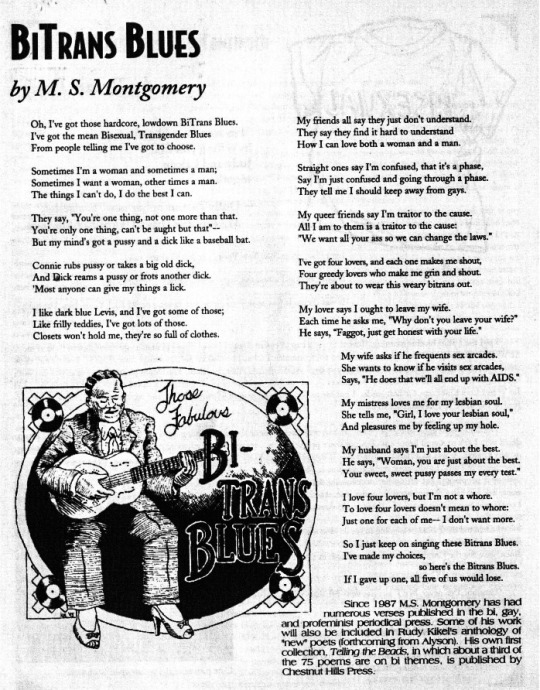
BiTrans Blues by M. S. Montgomery
from Anything That Moves issue 10, 1996
935 notes
·
View notes
Text
some historical bisexual photos!






reminder for this pride that bisexuals have always been a part of queer liberation, we have always existed and we always will <3
816 notes
·
View notes
Text

y’all remember this iconic photo?
This is Lani Ka'ahumanu, bisexual activist and co-founder of BiPOL, the first bisexual political organization in the United States.
Born to a Japanese and native Hawaiian mother and an Irish and Jewish father, she began her activism in the 1960’s in pro-civil rights and anti-Vietnam war protests. She identified as a lesbian and began her involvement in the LGBT liberation fighting for the rights of lesbian mothers. However, she would later fall in love with a (bisexual) man where she would realize her true sexuality. After a change in label, she felt shunned from mainstream lesbian and gay movement and began to push for bisexual visibility. She published the article “Biphobic: Some of my friends are” in a popular lesbian magazine in 1982 to spread awareness of biphobia within the lgbt community.
She launched a 12 city campaign for the inclusion of “bisexual” in the gay and lesbian march scheduled for 1993. Thanks to her efforts, it was renamed “March on Washington for Lesbian, Gay, and Bi Equal Rights and Liberation.” She was also scheduled as one of 18 speakers, taking her place as the only out bisexual on the panel.
Right before taking stage, she was told to cut her speech from 5 minutes to 2 because they had gone over time. She started with,
“Aloha, my name is Lani Ka’ahumanu, and it ain’t over til the bisexual speaks.”
She used her speaking time to raise awareness about the treatment of bisexuals and trans individuals, saying ..”recognition of bisexual orientation and transgender issues presents a challenge to assumptions not previously explored within the politics of gay liberation.”
Ka'ahumanu also considers herself to be a sex and body positive feminist. She created a “Peer Safer Slut Team” with Cianna Stewart, another activist, during the AIDS crisis to spread information through education workshops about safe sex for women and the lgbt community. held many educational workshops on safer sex
1993, she served as project coordinator for an American Foundation for AIDS Research grant awarded to Lyon-Martin Women’s Health Services. This is the first grant in U.S. to target young high risk lesbian and bi women for HIV/AIDS prevention/education research.
She co-authored “Bi Any Other Name: Bisexual People Speak Out” in 1991. This is largely considered the “bisexual bible” and helped kickstart the modern bisexual movement. She’s still alive today and doing work to promote bisexual activism and body positivity.
Sources/Further Readings:
1 2 3 4
10K notes
·
View notes
Text
“The first wave of people who started the Bi Center were political radicals and highly motivated people. The group was based on inclusivity … for example, in the women’s groups, anybody who identified as a woman had the right to be there, so a lot of transgender people started coming to the Bi Center. We were a social and a political organization fighting for recognition.”
— Bisexual activist David Lourea about the bisexual movement in the 1970s in San Francisco (via Bisexual Politics by Naomi Tucker)
881 notes
·
View notes
Text



























348 notes
·
View notes
Text
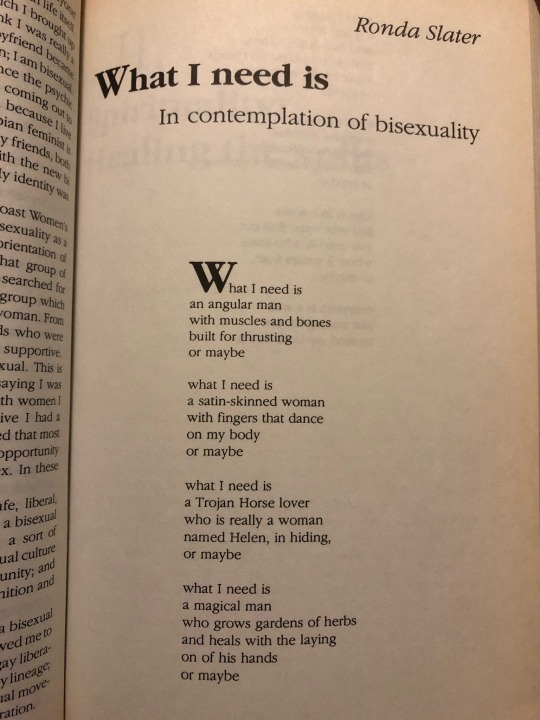
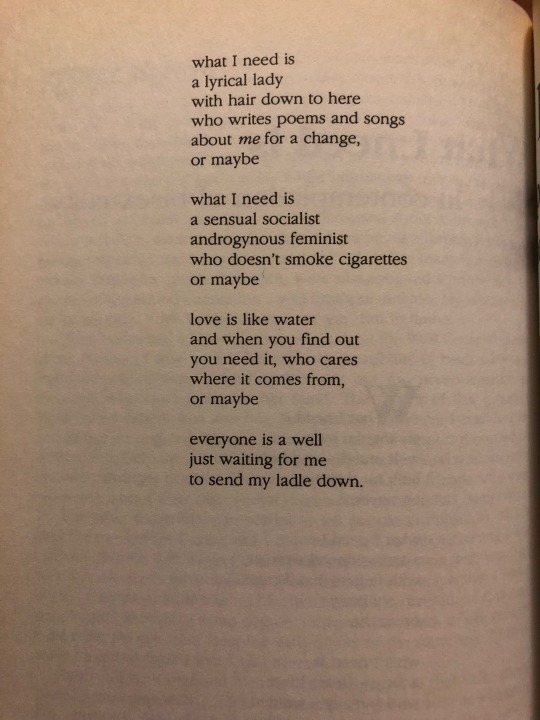
ronda slater, what I need is: a contemplation of bisexuality, from bi any other name: bisexual people speak out, edited by Lorraine Hutchins and Lani Kaahumanu, 1991
31K notes
·
View notes
Text

Boston Bisexual Women’s Network (Fall, 2010)
#bi history#bi pride#bisexuality#lgbtq history#queer history#2000s#bisexual pride#bisexual#bisexual history
55 notes
·
View notes
Text

Boston Bisexual Women’s Network (Apr/May, 1998)
#bisexuality#bi history#90s#bi pride#lgbtq history#queer history#bisexual#bisexual history#bisexual pride
16 notes
·
View notes
